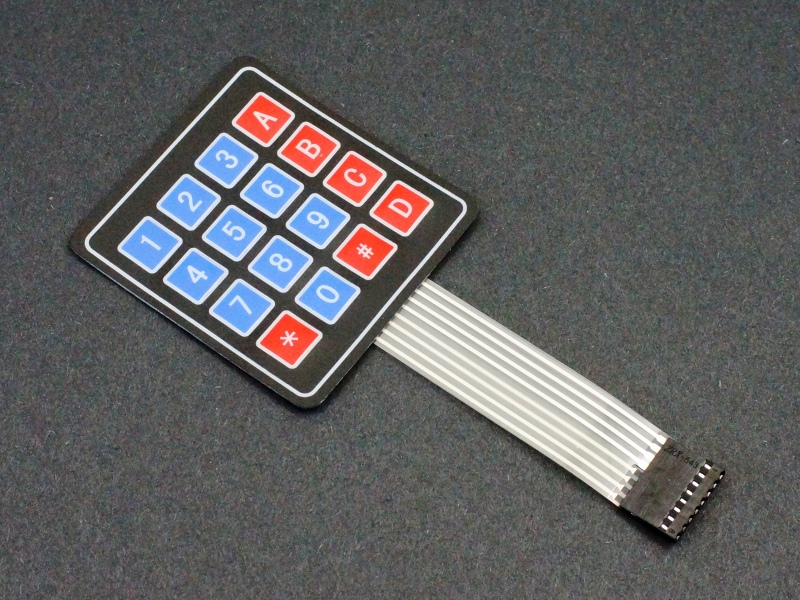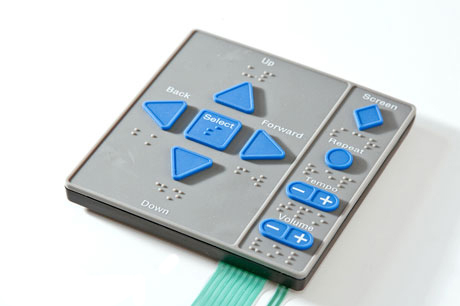Understanding the Relevance of Membrane Switches in Interface
Membrane buttons are indispensable components in the design of efficient customer interfaces, promoting not only functionality however likewise boosting visual appeal and user interaction. As we check out the different benefits and future patterns linked with Membrane modern technology, it comes to be clear that these buttons are more than just elements; they represent a convergence of advancement and functionality.
What Are Membrane Switches?

The spacer layer, which contains glue properties, permits for the splitting up of the circuit layer from the overlay, guaranteeing that the switch continues to be in a non-activated state till pressed. When pressure is used to the overlay, it compresses the spacer layer, bridging the void and completing the circuit in the underlying layer. This design not just minimizes the physical space needed for standard mechanical switches yet likewise enhances the longevity of the gadget, as Membrane buttons are typically immune to dust, moisture, and various other environmental variables.
Typically found in applications varying from consumer electronic devices to medical tools, Membrane buttons are essential to modern-day technology, giving a effective and user-friendly user interface that aligns with modern design demands.
Advantages of Membrane Buttons
While various button innovations exist, Membrane Switches offer distinctive advantages that make them especially preferable in different applications. Among the primary advantages of Membrane switches is their portable design, which permits space-saving executions in gadgets where realty is restricted. Their thin account not only improves aesthetic allure however also assists in light-weight construction.
An additional substantial advantage is their resistance to ecological factors. Membrane switches are typically sealed versus moisture, dust, and pollutants, making them ideal for use popular environments, such as medical tools and commercial devices. This toughness extends the lifespan of the switch, minimizing upkeep costs and boosting integrity.
Moreover, Membrane switches can be customized to meet particular design demands, integrating special graphics and shades that improve individual communication. Their tactile comments alternatives can additionally be customized to provide a rewarding customer experience. In addition, Membrane buttons are cost-efficient, specifically in high-volume applications, as they can be produced effectively.
Applications in Different Industries

In the customer electronics sector, Membrane switches are widespread in gadgets such as microwaves, cleaning makers, and remote controls. Their responsive feedback and visual options boost individual experience while giving a smooth, modern appearance. Additionally, vehicle manufacturers make use of Membrane switches in control panel controls and infotainment systems, where area is restricted, and individual involvement is vital.
Moreover, the industrial field leverages Membrane buttons in control panels for equipment and browse around this site equipment, permitting intuitive operation in usually severe settings. Their resistance to chemicals and moisture makes sure long life and reliability in these applications. Generally, the flexibility of Membrane Switches contributes dramatically to their widespread use, making them crucial in various technological domain names.
Layout Considerations for Membrane Switches

When creating Membrane buttons, numerous key considerations should be taken into consideration to make sure ideal capability and customer experience. The choice of materials is critical; selecting durable, high-quality substratums can boost the button's durability and resistance to environmental elements such as moisture and temperature variations.
Second of all, the style of the graphic overlay should focus on quality and simplicity of use. Icons and message need to be readable, and the design should facilitate instinctive communication (membrane switches). Additionally, responsive pop over here responses is necessary; integrating a tactile dome or various other systems can enhance the customer experience by supplying physical confirmation of activation
An additional crucial element is the button's electric performance. Developers should ensure that the conductive traces are effectively created to minimize resistance and stay clear of signal interference. This entails examining the required actuation pressure and guaranteeing compatibility with the digital elements they will certainly interface with.

Future Trends in Membrane Modern Technology
As innovation proceeds to advancement, Membrane buttons are poised to advance considerably, driven by technologies in materials and producing strategies. One emerging trend is the unification of advanced materials, such as flexible substrates and conductive inks, which boost durability and minimize the total weight of Membrane switches. These materials not only boost the responsive response however likewise permit for the layout of switches that can endure harsher ecological problems.
In addition, the integration of touch-sensitive technologies is transforming standard Membrane Switches into more interactive individual interfaces. Capacitive touch sensing units installed within Membrane button panels can give a more user-friendly and responsive individual experience, lining up with the expanding need for smooth, contemporary layouts in customer electronic devices.
In addition, innovations in printing strategies, such as electronic and 3D printing, make it possible for quick prototyping and modification of Membrane buttons. This versatility enables makers to react quicker to market demands and consumer preferences.
Lastly, sustainability is becoming a substantial emphasis, with suppliers checking out green products and processes. As these trends unravel, the future of Membrane innovation guarantees enhanced capability, visual charm, and environmental responsibility, strengthening their function in sophisticated user interfaces throughout different industries.
Conclusion
In final thought, Membrane Switches represent an essential component in the layout of user interfaces, integrating capability with aesthetic versatility. As advancements in innovation proceed, the evolution of Membrane buttons is anticipated to further fine-tune customer interfaces, driving development and enhancing use in an increasingly complicated technical landscape.
Membrane switches are essential elements in the layout of effective individual interfaces, assisting in not just functionality but likewise boosting visual allure and user interaction.Membrane Switches offer as an essential part in various user interfaces, helping with a smooth communication in between customers and digital tools.While numerous switch technologies exist, Membrane Switches offer distinct advantages that make them especially desirable in different applications.Additionally, Membrane switches can be personalized to satisfy certain style demands, integrating special graphics and shades that improve individual interaction.In final thought, Membrane Switches represent a vital part in the layout of customer interfaces, incorporating functionality with visual flexibility.